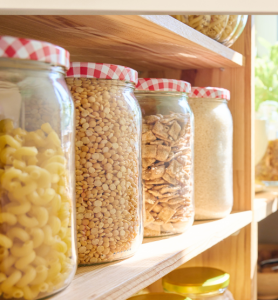Waste isn’t just a personal problem — it’s a systemic one. Industries churn out products designed for the dump, and governments must step up to rethink how we manage materials. But that doesn’t mean our personal choices don’t matter.
At our latest Zero Waste Committee meeting, we shared everyday tips for living with less waste — not out of guilt, but because we believe in modeling practical, hopeful action. Here’s some of what inspired and worked well for us:
Start Small: It’s a Process
Zero waste living isn’t about perfection. Many of us found success tackling the “low-hanging fruit” first: bringing a reusable cup, remembering a cloth bag, or choosing unpackaged produce. These small steps build habits that lead to bigger change.
Thoughtful Shopping = Less Waste
We discussed ways we shifted our shopping habits to reduce packaging and plastic:
- Always bring reusable shopping and produce bags
- Choose unpackaged items and avoid overly wrapped goods
- Support farmers markets and CSAs that prioritize waste reduction
- Shop at refill stores and groceries stores that allow reusable bags/containers in the bulk department
Stores with refill and bulk options:
Do you have a recommendation? email communications@spec.bc.ca and we’ll put it on the list!


Giving Clothing and Textiles a Second Life
Clothing waste is a topic that keeps coming up at ZWC meetings. The current system is designed for waste and it can be discouraging. Here’s some of the things our members suggested.
- Donate wearable clothes to extend their life
- Donate towels, blankets, and pillow cases to a pet shelter
- Upcycle fabrics:
- Produce bags – Sew small bags for fruits and veggies (watch a how-to video here)
- Scrap stuffing – Use tiny scraps as filler for pillows, pet beds, or draft stopper
- Jar toppers – Decorative covers for mason jar gifts or preserves
- Reusable makeup wipes – Soft flannel or cotton pieces cut into rounds or squares
- Fabric bunting or garlands – Great for celebrations or room décor
- Bookmarks – Sew or glue fabric scraps onto cardboard
Pet toys and beds – sew simple toys, combine scraps into a bed, or create a treat mat with fabric, toilet paper rolls, and cardboard
A note about upcycling fabric: You don’t need to be an expert sewer or have all the right tools to get started. Simple projects, like cutting old T-shirts into rags or hand-sewing small items, are great first steps. Your seams don’t need to be perfectly straight – what matters is that you’re working toward reducing waste and giving materials a second life. Progress over perfection!

Electronics Recycling
Recycling old electronics came up as another simple but impactful practice. London Drugs is a convenient local drop-off point for many small electronics.
Another tip was to check thrift stores before buying new electronics. You can often find power cords, chargers, headphones, keyboards, and even small appliances secondhand – saving money and reducing demand for new production. It’s a great way to keep usable electronics out of the landfill and give them a second life.
This meeting reminded us that zero waste living is not a fixed destination, it’s a journey shaped by things like our creativity, community, and willingness to take the next small step. Thanks to everyone who joined the meeting and brought their experiences and suggestions.
Have other ideas or stories? We’d love to hear from you. Send feedback and ideas to communications@spec.bc.ca
Want to get involved and stay up to date with local zero waste news?
Sign up to receive our monthly Zero Waste Newsletter to keep updated with meetings, Repair Cafés, events, and local waste reduction news.